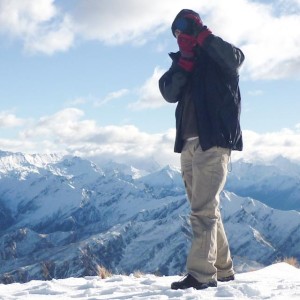
Standing on a promontory at a bend in the Nile, where in ancient times sacred crocodiles basked in the sun on the riverbank, is the Temple of Kom Ombo. This temple is unusual in its construction – built as a double Temple. This is quite unique in Egypt. The right hand side of the Temple is dedicated to the local crocodile god Sobek, whilst the left hand side is dedicated to Haroeris, from har-wer, meaning Horus the Elder.
The Temple is perfectly symmetrical along the main axis of the temple, there are twin entrances, two shared hypostyle halls with carvings of the two gods on both sides, and twin sanctuaries. It is assumed that there were also two priesthoods.
Built in the Ptolemaic dynasty, some additionals were made later during the Roman period. The temple was started by Ptolemy VI Philometor (180-145 BC) at the beginning of his reign and added to by other Ptolemys, most notably Ptolemy XIII (51-47 BC), who built the inner and outer hypostyle halls. The scene on the inner face of the rear wall of the temple is of particular interest, and “probably represents a set of surgical instruments.”

Much of the temple has been destroyed by erosion of the Nile, earthquakes, and later builders who used its stones for other projects. Some of the reliefs inside were defaced by Copts who once used the temple as a church. All the temples buildings in the southern part of the plateau were cleared of debris and restored by Jacques de Morgan in 1893.
A few of the three-hundred crocodile mummies discovered in the vicinity are displayed in The Crocodile Museum.
Foundations are all that are left of the original Pylon. Beyond the Pylon, there was once a staircase in the court that lead to a roof terrace. The court has a columned portico and central altar. There is a scene of the King leaving his palace escorted by standards. Near the sanctuary is a purification scene. On either side of the door to the Porticos are columns inscribed with icons of the lotus (south) and papyrus (north), symbolizing the ‘two lands’ of Egypt.
In the southwest corner of the Porticos is the one column that does not echo the duality of the temples. Here, there are scenes depicting purification of the King, his coronation and his consecration of the Temple. The ceiling has astronomical images.
The hypostyle hall has papyrus capitals on the columns. Here, there is an inventory of the scared places of Egypt, the gods of the main towns and the local and national festivals.
Statues to the gods and the builders of the temple once occupied the net room just before the sanctuaries. The ceiling of the pure place to the north still remains with an image of Nut. There is little left of the sanctuaries.

Our Experience
We arrived late in the afternoon and after our Tour Director gave a description of the Temple, we were able to wander around the Temple. Although the temple is quite damaged, the inscriptions and hieroglyphics (including colour) on what was remaining were quite good. The actual area of the remains of the Temple were much smaller compared to the areas of Philae and Edfu.
I found the lighting of the Temple in the evening was great and provided some excellent photographic opportunities.
I guess it was due to the late hour of our arrival and also departure, the number of people trying to sell us items was far less and made for a much more pleasant experience.

We also found that staff from our boat was also around to direct us back to the boat without having to “run through” the area where items were for sale.
For more information about Kom Ombo Temple
- 2014-03-19 – Esna – Kom Ombo – Aswan
- Egyptian Crocodile God – Sobek
- Egyptian Mythology – Horus
- Kom Ombo Temple
